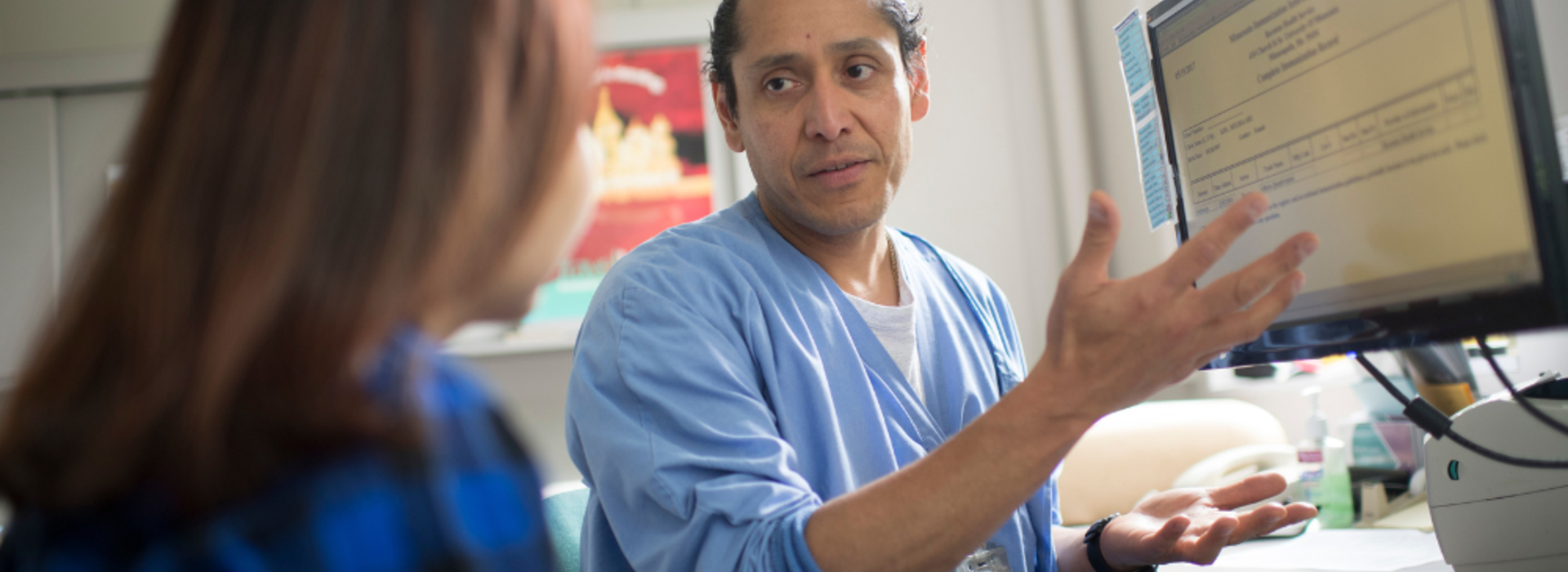
U of M Medical Students Seek to Better Serve Spanish-Speaking Patients in Twin Cities and Beyond with New Medical Spanish Program
This fall semester marked the beginning of a brand new Medical Spanish program at the University of Minnesota Medical School. Currently the program consists of a semester-long course during which students complete a virtual medical interpreter training course and have the opportunity to take the ClinicianCultural and Linguistic Assessment (CCLA), a tool developed by Kaiser Permanente to evaluate the language proficiency of bilingual physicians.
Three years in the making, the medical Spanish program was spearheaded by a group of medical students including Sydney Geiger, Miranda Harris, Sinibaldo Romero Arocha, Nicolas Villarraga, Morgan McBride and Vineet Raman. The inspiration for the program came when Geiger, Romero Arocha and Villarraga were all working at the Phillips Neighborhood Clinic and saw an opportunity for the medical school to better prepare future physicians to serve Spanish-speaking patients.
“Due to limited resources, as Spanish-speaking students, we were volunteering as interpreters, but none of us were trained as interpreters,” Geiger recalls.
Geiger clarifies that although someone may have high proficiency or even fluency in a language, knowing and understanding specific medical terminology in that language is an entirely different skill set.
“All patients deserve the opportunity to have professionally trained interpreters. We wanted for ourselves and for our peers who have advanced levels of Spanish to be able to really hone our skills so we can use Spanish in a medical setting.”
“We just started with a small idea,” says Villarraga. “And then it really started to take off when we started talking to other peers in our class that were also interested in learning this.”
Although the students express resounding support and appreciation for medical interpreters, they unanimously agree that the ideal way for patients to receive information is directly from their provider, meaning that it is important for medical schools to provide language training to future physicians.
“The availability of qualified interpreters is very uneven,” says Raman. “We have a patchwork sort of system of access with some patients getting in-person interpreters and some having to struggle with iPads and phones. So if we can have doctors who can already serve that role, it makes more interpreters available who may be needed elsewhere.”
For McBride, the fight for quality interpreters is a personal one.
“I am congenitally deaf,” she explains. “So I had numerous American Sign Language interpreters growing up.”
McBride says that she fell behind in school and lacked important knowledge for children her age because of a gap in language access.
“That was in an academic setting, but in health care settings it is even more important for people to not miss information,” she stresses.
With this goal in mind, they approached medical school faculty to see if they could find support for their program and found advocates in Dr. Jeffrey Chipman, Dr. Michael Kim and Dr. Betsy Murray.
After working with faculty to create a proposal, the medical Spanish program was approved last year and began taking applications from students interested in joining for the inaugural semester.
“We were astounded by just how many applicants we had,” Geiger emphasizes. “I think that supports how much of a need for this program there is at this school and how excited everyone is.”
The students say their goal is to develop the pilot course into a four-year long longitudinal program. Although there is more work to be done, they are thrilled to see their idea come to life for the eleven students who were accepted into the program this fall.
Villarraga says, “We have the vision, and it’s about providing patients high quality care. That’s what drives me to keep this project running.”